Explorers Claim to Have Discovered Inca Emperor’s Tomb
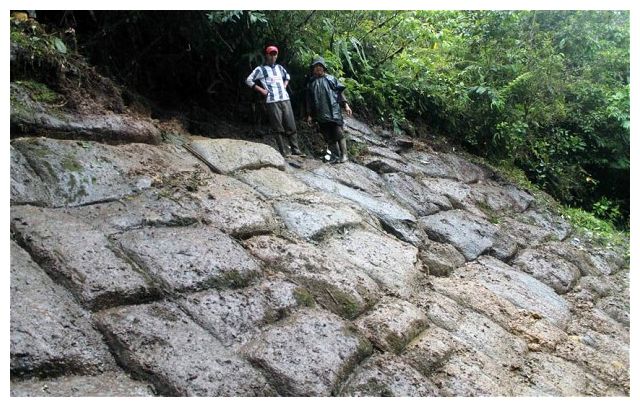
May 3, 2014
The Telegraph
It sounds like a plot from an Indiana Jones film, but explorers claim to have found ruins hidden deep in a dense and dangerous Amazonian jungle that could solve many of South America’s mysteries – and lead to one of the world’s most sought-after treasures.
(more…)
How Inca Postal Runners Delivered Their Emperor Fresh Fish From the Sea
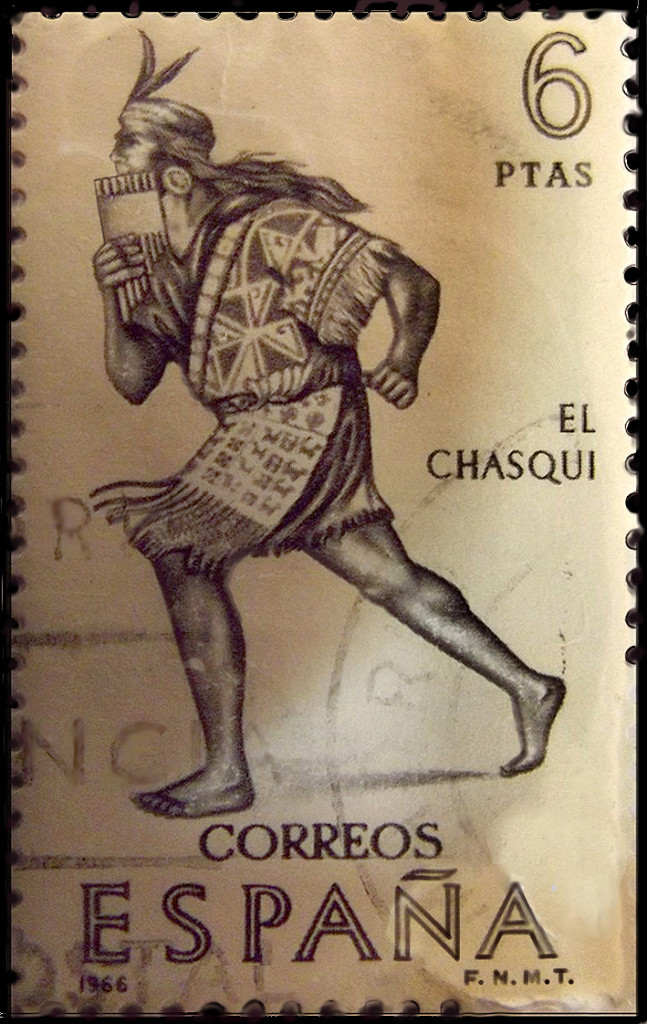
Inka Chasqui runner on Spanish postal stamp
Note: the Incas built one of the greatest roadways in the world, called the Qhapaq Ñan, or “beautiful roadway.” It stretched for more than 2,500 miles in length, from Colombia to mid-Chile, covered more than 26,000 miles of roadway. A tiny stretch of that roadway, which ends at Machu Picchu, is what is now known as the “Inca Trail.” KM
Arequipa: Discovery of Inca Roadway Section
Perú21
March 6, 2014
Translated by Kim MacQuarrie
Early historians noted and were surprised to learn that the Inca [emperor] ate fresh fish, brought from the sea, to Cusco. How did it arrive, they wondered? Now the mystery has been solved with the discovery of about 22 kilometers of Inca roadway, located in the coastal area of the province of Caravelí in the Arequipa region. All indications are that [relay] runners used this route to fulfill that role.
The Kontisuyo Qhapac Nan route was about 400 kilometers long. That stretch links Cusco with the Atiquipa district in the province of Caravelí (Arequipa). And that roadway is currently more relevant than ever, said tourism specialist Rolly Valdivia to our Perú21 correspondent in Arequipa.
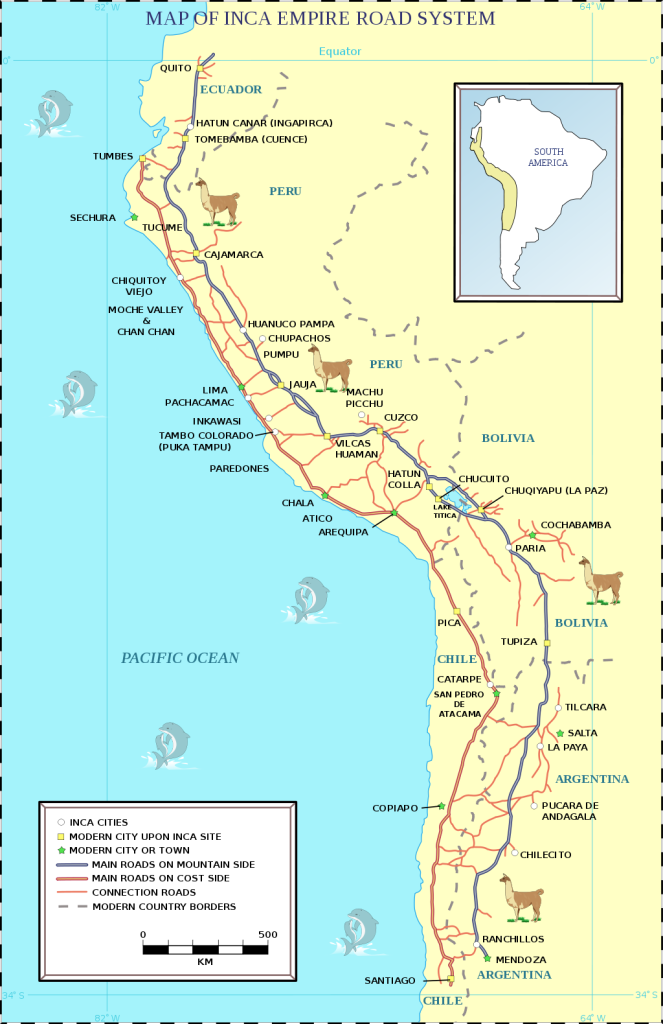
“Some sections are thousands of years old as Arequipa continued to play its role in integrating diverse village. Many of these still have no roads,” he stressed.
The design of Qhapac Nan, linking a total of six countries in Latin America, allowed the articulation of a great Tahuantinsuyo [Inca Empire] with transverse and longitudinal paths, where products from the coast, highlands and jungle were transported.
Part of that roadway is the 22 miles of a new section of roadway linking the towns of Chala and Acari, which was discovered by a technical group from the Qhapac Nan Project, of the Ministry of Culture.
This section crosses desert areas and coastal hills , between kilometers 591 and 625 of the South Pan American Highway, in the districts of Chala and Atiquipa.
The Qhapac Nan research coordinator, Guido Casaverde, said preliminary investigations indicate that this stretch of roadway came from the north from the Inca administrative center of Tambo Viejo (Acari) and south to the site of the Tambo (house), connecting the archaeological sites of La Caleta, La Quebrada de Vaca (Puerto Inca) , Quebrada Mocha and Tanaca.
Note:
The Qhapac Nan Project is currently working on having the [remaining] Inca highway designated as a World Heritage Site. During that effort, the project has discovered several new routes.
Date:
Its construction would have occurred in the Late Horizon period, during which the Incas achieved the maximum expansion of their empire.
Excerpt from the Spanish historian, Bernabe Cobo (1582-1657), from History of the Inca Empire:
“The Incas also used the [chaski] runner and messengers when they felt like having something especially delicious that needed to be brought from far away; if, while he was in Cuzco, the Inca [emperor] felt a desire for some fresh fish from the sea, his order was acted upon with such speed that, although that city is over seventy leagues from the sea, the fish was brought to him very fresh in less than two days…the post service of the chasques was held to be one of the great accomplishments of the Inca kings….”
Royal Pre-Inca Tomb Discovered With Thousand-Year-Old Wari Queens
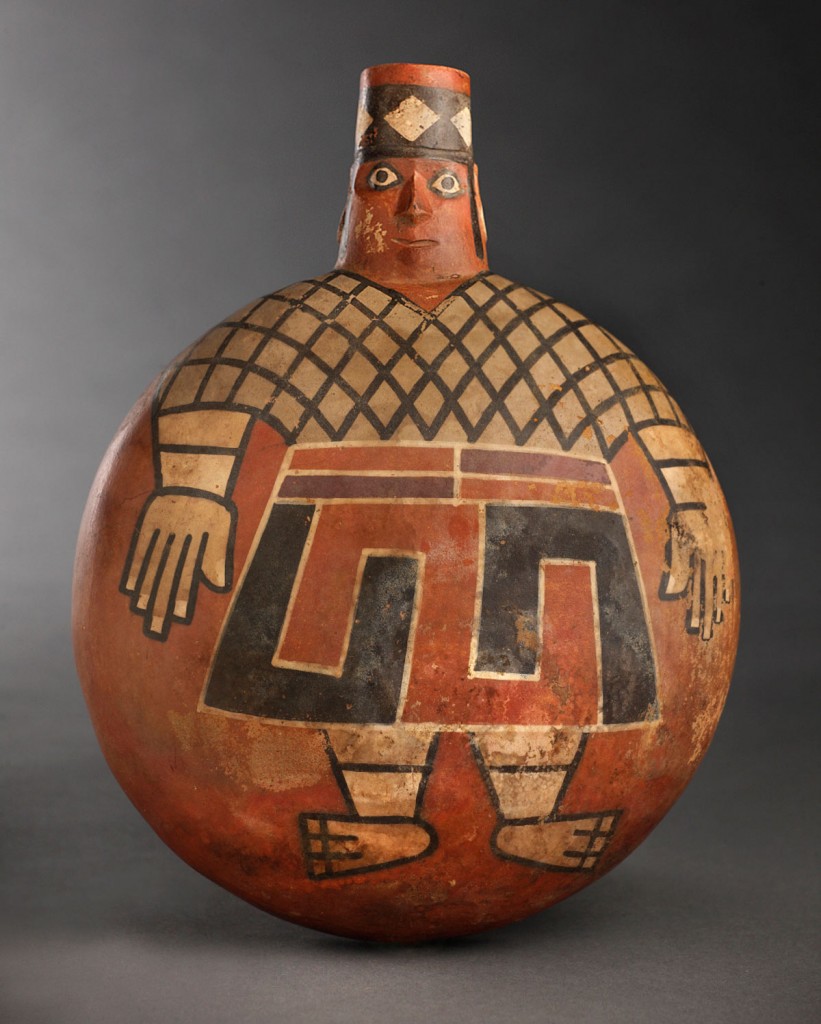
A 1,200-year-old ceramic painted with a Wari lord, recently discovered at the tomb of El Castillo de Huarmey in Peru
First Unlooted Royal Tomb of Its Kind Unearthed in Peru
Three queens were buried with golden treasures, human sacrifices.
National Geographic
Published June 27, 2013
It was a stunning discovery: the first unlooted imperial tomb of the Wari, the ancient civilization that built South America’s earliest empire between 700 and 1000 A.D. Yet it wasn’t happiness that Milosz Giersz felt when he first glimpsed gold in the dim recesses of the burial chamber in northern Peru.
(more…)
Mysterious Lines Explained in Peru’s Nazca Desert
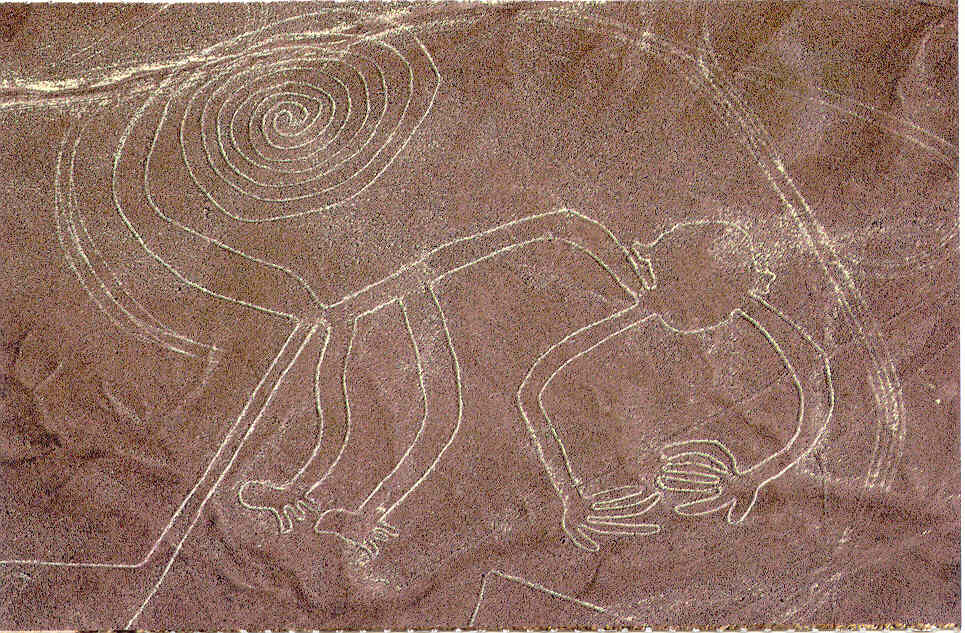
Labyrinth Lies Within Mysterious Desert Drawing
Dec 11, 2012
Discovery.com
A large labyrinth lies in the midst of Peru’s Nazca Lines, according to the most detailed study on the enigmatic desert etchings created between 2,100 and 1,300 years ago.
Completely hidden in the flat and featureless landscape, the labyrinth was identified after a five-year investigation into the arid Peruvian coastal plain land, about 250 miles south of Lima, where the mysterious geoglyphs are located.
(more…)
Climate Change May Have Led to Earliest South American Mummies

A 7,000-year-old mummy from the Chinchorro culture, along the border of Chile and Peru, whose skin, hair and clothing still remain (photos: National Geographic)
Changing Climate May Have Led To Earliest Mummies
NPR
August 15, 2012
A couple of thousand years before the Egyptians preserved some of their dead, a much simpler society made the first known mummies.
(more…)
Did Ecuador Discover the Last Inca Emperor’s Tomb?
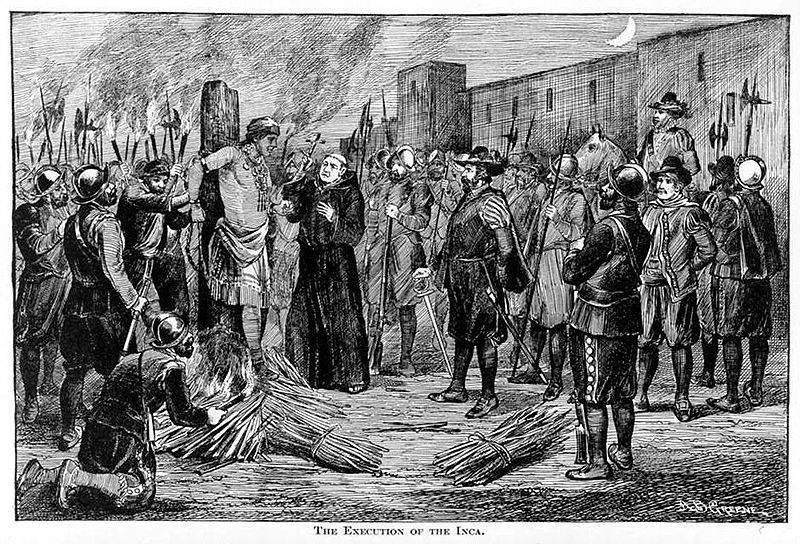
The execution of the Inca emperor, Atahualpa, by the Spanish conquistadors in 1533
(Note: In 1533 Francisco Pizarro captured and executed the Inca emperor at the time, Atahualpa. However, after Atahualpa’s death, three more Inca emperors ruled from the Incas’ rebel capital of Vilcabamba: Sayri Tupac, Titu Cusi, and Tupac Amaru. The Spaniards executed the final Inca emperor, Tupac Amaru, in Cuzco in 1572–almost forty years after Pizarro’s arrival–Kim MacQuarrie).
Ecuador may have found last Inca emperor’s tomb
Agence France-Presse
February 29, 2012
It has been sought for centuries but remained a mystery, still out of reach. Now an expert has pinpointed a site that could be Atahualpa’s resting place: the last Inca emperor’s tomb….
(more…)
New Peruvian Site Rivals Machu Picchu
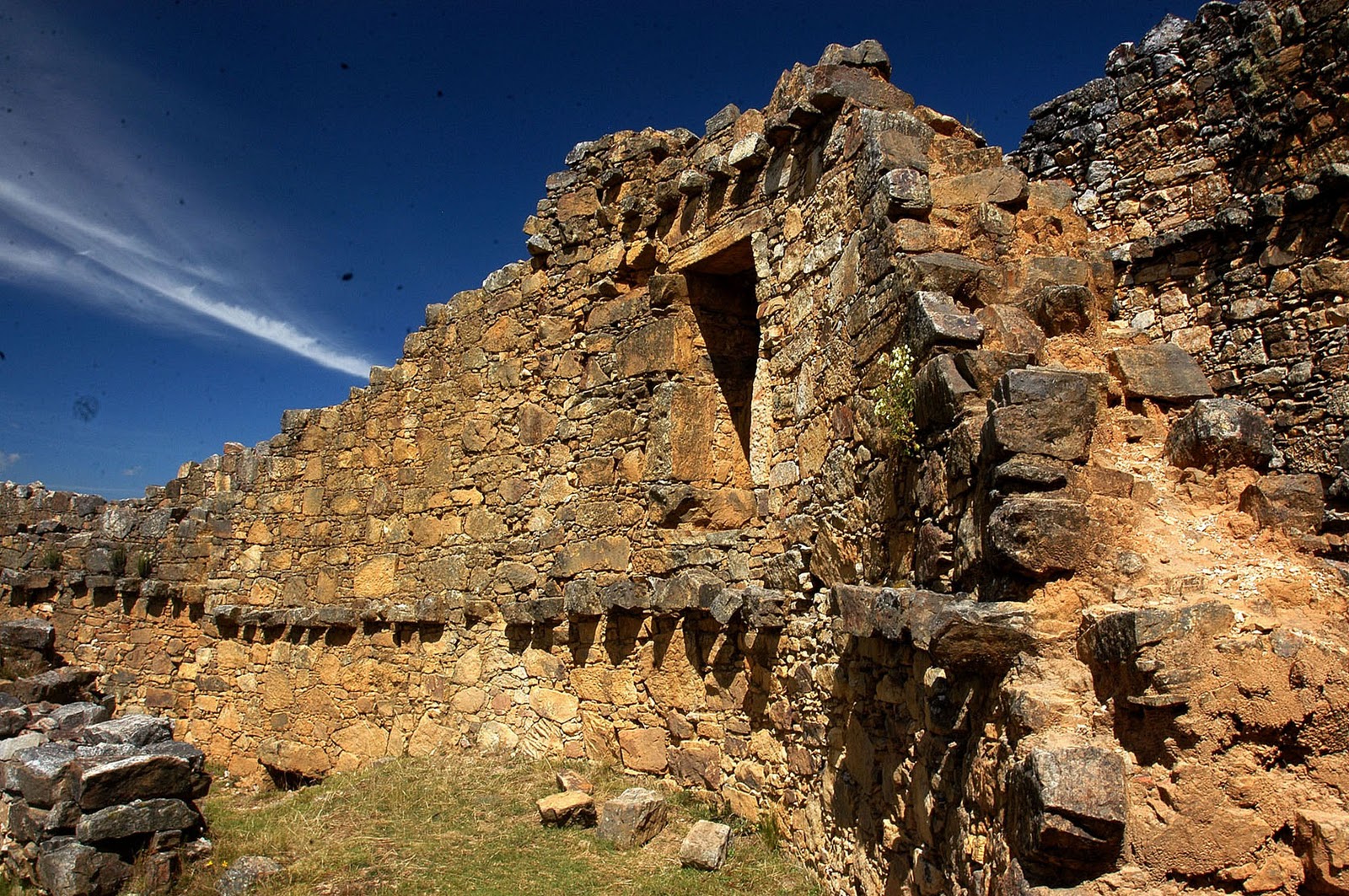
Built by an unknown, pre-Inca culture high in Peru’s northern Andes, Marcahuamachuco was Peru’s most important political, economic, and military center, built sometime between 400 and 800 AD
Marcahuamachuco: the next Machu Picchu?
Agence France-Presse
Nov 27, 2011
Lima, Peru – Marcahuamachuco, an enigmatic 1,600-year-old archeological complex built from stone in the northern Peruvian Andes, is emerging bit by bit from oblivion and could become a beacon of tourism on the scale of Machu Picchu.
(more…)
Looters Strip Archaeological Heritage of Mayan and Moche Civilizations
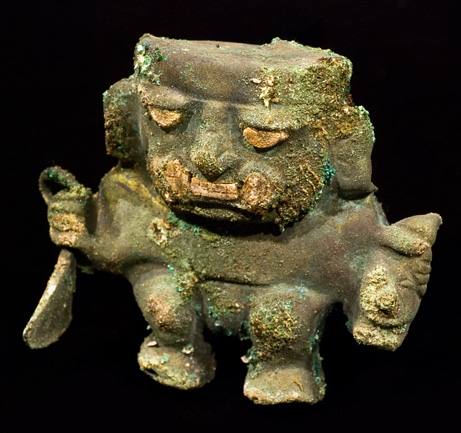
Ai Apaec, the Moche Decapitator
Looters Strip Latin America of Archaeological Heritage
A century after Machu Picchu’s rediscovery, ancient Mayan and Moche sites are being ransacked for tourist baubles
March 21 2011
The Guardian
The 100th anniversary of the rediscovery of Machu Picchu will highlight the current ransacking of the area’s archaeological treasures.
Etched into the surviving art of the Moche, one of South America’s most ancient and mysterious civilizations, is a fearsome creature dubbed the Decapitator. Also known as Ai Apaec, the octopus-type figure holds a knife in one hand and a severed head in the other in a graphic rendition of the human sacrifices the Moche practiced in northern Peru 1,500 years ago.
For archaeologists, the horror here is not in Moche iconography, which you see in pottery and mural fragments, but in the hundreds of thousands of trenches scarring the landscape: a warren of man-made pillage. Gangs of looters, known as huaqueros, are ransacking Peru’s heritage to illegally sell artifacts to collectors and tourists…
(more…)
Discovery of Sacred Inca Stones Linking The Heavens With Earth
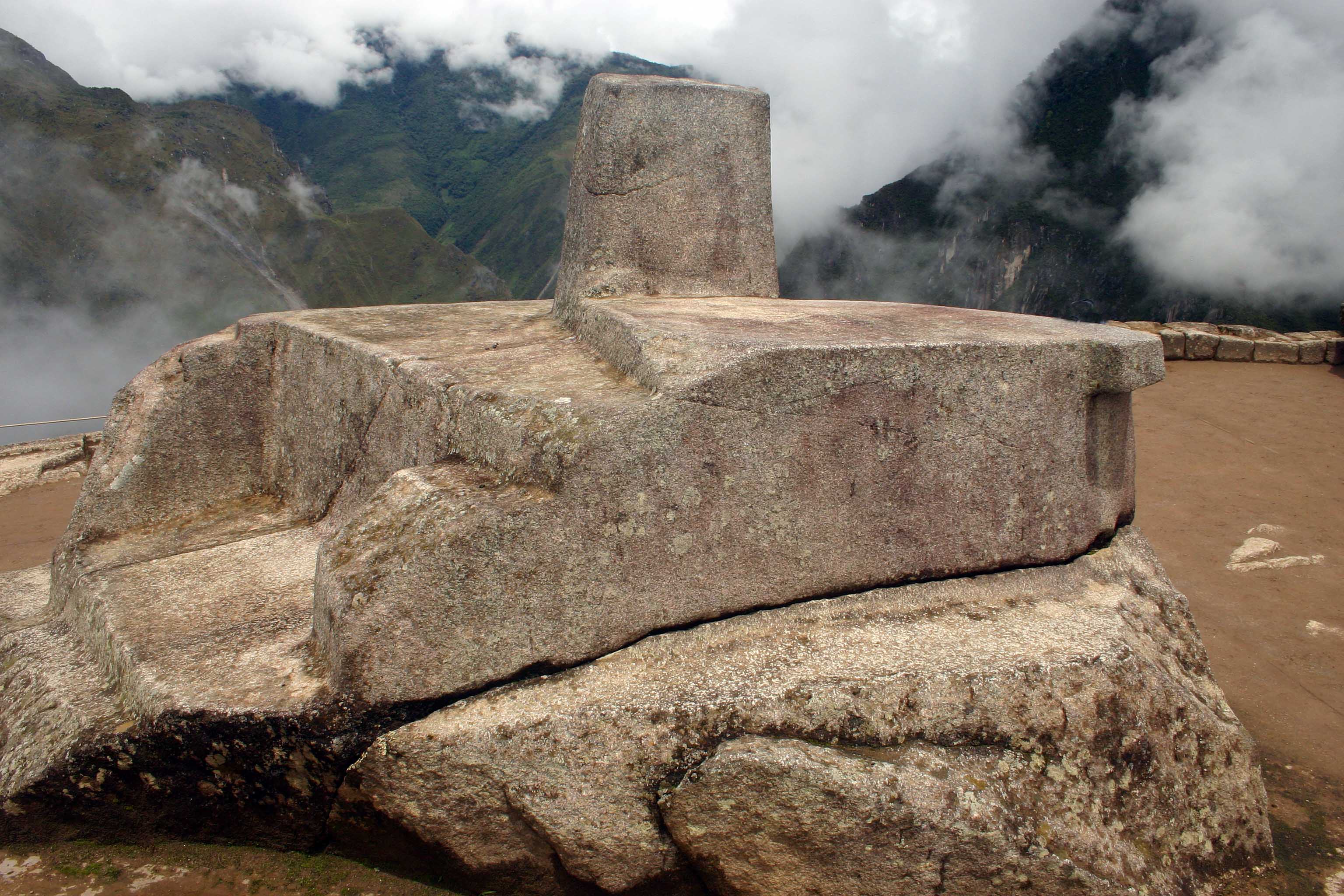
The Famous Intihuantana, or “Hitching Post of the Sun,” a sundial that also measured the equinoxes at Machu Picchu)
Peru: ‘Sensational’ Inca Find For British Team In Andes
Discovery of Sacred Ancestor Stones Has Archaeologists ‘Dancing a Jig’
Dec 5, 2010
The Guardian
A British team of archaeologists on expedition in the Peruvian Andes has hailed as “sensational” the discovery of some of the most sacred objects in the Inca civilisation – three “ancestor stones”, which were once believed to form a precious link between the heavens and the underworld.
(more…)
Yale Agrees To Return Machu Picchu Artifacts to Peru
Peru President Says Yale to Return Inca Artifacts
Nov 20, 2010
The Associated Press
LIMA, Peru — Peru’s president announced Friday that Yale University has agreed to return thousands of artifacts taken away from the Inca citadel of Machu Picchu nearly a century ago.
(more…)










